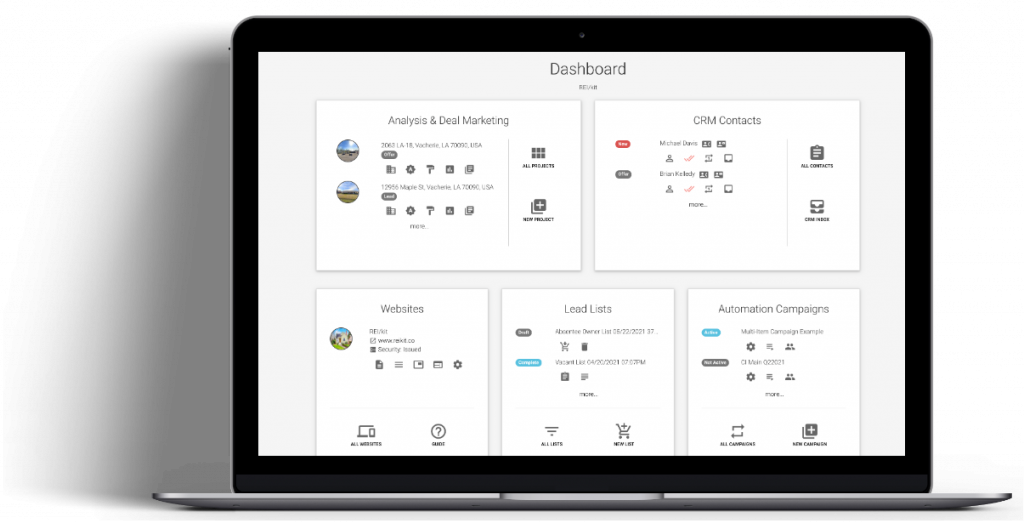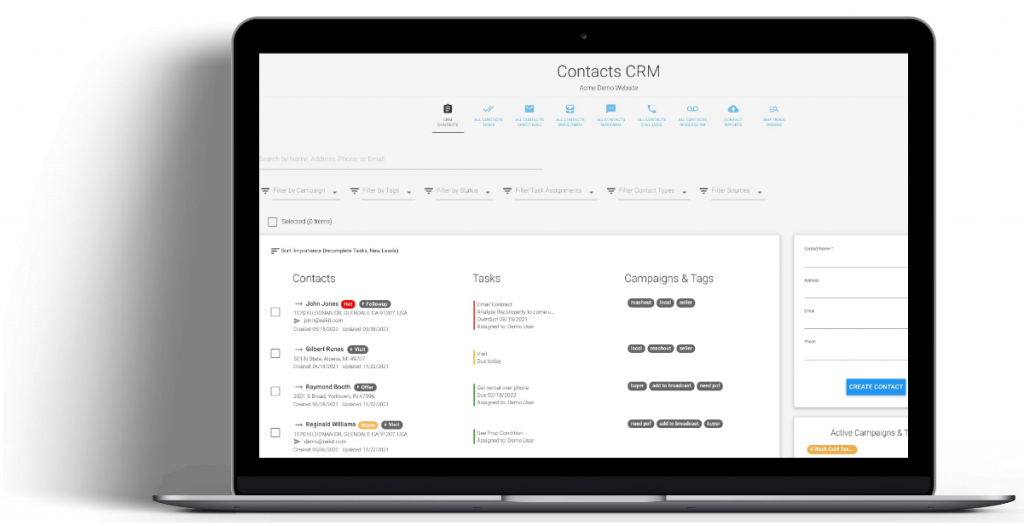
As a real estate wholesaler, you live and breathe connecting with property owners fast using SMS.
Enter A2P 10DLC, which are the rules and regulations set out by the telco carriers in August of 2023 — a system that has stopped SMS texting campaigns from reaching sellers if you don’t comply.
Despite having a sense of the need to abide by those rules, or simply through not getting clarity on them, many wholesalers still hesitate – and misinformation spreads quickly.
Why should you care?
Not understanding A2P 10DLC rules could, at a minimum, mean blocked messages and missed lead communications. It could also mean hefty automatic fines that would put you out of business.
It’s time to set the record straight. Ths guide tackles the most persistent A2P 10DLC myths in wholesaling. We’ll cover:`
- Why the size of your business doesn’t matter
- What consent is and whether it’s necessary
- The real impact on deliverability rates
- The actual costs of non-compliance
And much more.
If you’re new to the concept of A2P 10DLC, or you are not sure if it applies to your business, read the companion article here: What is 10DLC for Real Estate Wholesalers
Let’s dig in.
- Sole Proprietors Don’t Need to Comply:
If you are a sole proprietor or small business owner, you may believe that you are exempt from A2P 10DLC regulations. This couldn’t be further from the truth. Regardless of your business size, if you’re sending automated text messages, compliance is non-negotiable. Ignoring these rules can lead to message filtering and potential fines. That’s because in the eyes of carriers and regulators, size doesn’t matter.
- It’s Only for Large Volumes of Texts:
There’s a persistent belief that A2P 10DLC only applies to businesses sending massive volumes of texts. In reality, these regulations cover any automated text messaging, even if you’re sending just a few messages daily. Don’t fall into the trap of thinking you’re flying under the radar with lower volumes. Carriers are increasingly sophisticated in their monitoring, and non-compliance can lead to blocked messages, regardless of your send frequency.
- Registration Is Optional:
Is A2P 10DLC registration considered a suggestion, rather than a requirement? Absolutely not – this is a dangerous misconception. Compliance is mandatory, and if you are hesitating, industry data shows that messages from unregistered numbers can see deliverability rates plummet by up to 75%. That’s a direct hit to your bottom line.
- Any 10-Digit Number Will Work:
Some businesses assume they can use any 10-digit number for bulk messaging without consequences. This is a risky gamble. Carriers have implemented sophisticated algorithms to detect and block potential spam, which can affect businesses using non-compliant numbers. Proper registration ensures your messaging number is recognized as legitimate, maintaining your message deliverability and protecting your ability to send SMS.
- It’s Too Expensive for Small Businesses:
There’s a widespread belief that A2P 10DLC compliance is prohibitively expensive for smaller businesses. While there are costs associated with registration and per-message fees, they’re generally scaled to accommodate businesses of all sizes. For instance, monthly fees for maintaining a registered A2P 10DLC can be as low as $2.00, with per-message fees often amounting to a few cents. When weighed against the potential costs of non-compliance, registration is a no-brainer.
- Carriers Don’t Enforce the Rules:
There’s a dangerous assumption that carriers are lenient in enforcing A2P 10DLC rules. In reality, carriers are actively monitoring compliance and have implemented automated systems to block or filter messages from unregistered numbers. Non-compliance can lead to substantial and automatic fines, with businesses potentially facing penalties of thousands of dollars per violation. It’s not a question of if you’ll get caught, but when.
- It Doesn’t Impact Message Deliverability:
Some businesses operate under the false assumption that A2P 10DLC compliance doesn’t significantly impact message deliverability. The reality is stark: non-compliant campaigns can face up to a 90% block rate on their messages. Imagine losing 9 out of every 10 customer touchpoints, and saying goodbye to entirely wasted time and money.
- Instant Approval Process:
Many businesses expect the A2P 10DLC registration process to be instantaneous. In reality, it’s more like a thorough background check than a quick sign-up. The vetting process involves carrier checks that can take several days to weeks, depending on the complexity of your use case and the accuracy of the information provided. Plan ahead and factor this timeline into your messaging strategy to avoid potential delays in your campaigns.
- Personal Numbers Are Exempt:
There’s a common misconception that personal numbers used for business purposes are exempt from A2P 10DLC regulations. This is not the case. Even if you’re using a personal number for automated or bulk business messages, you need to comply. This ensures all business communications are held to the same standards, protecting consumers from spam and protecting your messaging channels across the board.
- All Providers Offer the Same Capabilities:
Not all messaging service providers are created equal. There’s a misconception that they all offer the same capabilities and support for A2P 10DLC compliance. In reality, providers can vary significantly in their offerings. When choosing a provider, consider factors such as whether they have an in-software compliance system, compliance customer support, cost-effectiveness in providing phone numbers, and straightforward application processes.
- Consumer Consent Isn’t Strictly Required:
Some businesses operate under the false assumption that obtaining explicit consumer consent for messaging isn’t strictly necessary. In fact, it’s a critical component of A2P 10DLC compliance. Not only is it legally required, but failing to obtain proper consent puts you at risk of legal penalties.
- No Real Penalties for Non-Compliance:
There’s a dangerous belief that non-compliance with A2P 10DLC carries no significant consequences. The truth is that penalties can be severe, with fines ranging from $10 to $1,500 per message violation. These can accumulate quickly, potentially leading to substantial financial damage.
- It Will Soon Be Replaced or Phased Out:
Some businesses are holding off on full A2P 10DLC compliance, believing it will soon be replaced or phased out. However, A2P 10DLC is the current standard and is expected to remain relevant for the foreseeable future. Rather than waiting for a change that may not come, businesses should abide by these regulations as part of their long-term messaging strategy.
- A Single Violation is Insignificant:
There’s a tendency to downplay the significance of a single A2P 10DLC violation. However, even one infraction can lead to serious consequences, including immediate message filtering and potential legal action. Compliance isn’t just about avoiding penalties—it’s about maintaining the integrity of your business communications.
- You Can Use the Same Content for All Messages:
A common misconception is that a single registration covers all of a business’s messaging activities. In practice, each messaging campaign or use case often requires its own registration. This granular approach helps carriers track and manage different types of messages, ensuring they adhere to guidelines and reduce spam. It’s not just about registering your business—it’s about registering your specific messaging intents
- It Only Applies to Marketing Messages:
A common misunderstanding is that A2P 10DLC only applies to promotional content. In fact, these regulations encompass all forms of automated messages, including transactional communications like appointment reminders and shipping notifications. Failing to comply doesn’t just affect your marketing efforts—it can disrupt critical operational communications with your customers.
- Long Codes and Short Codes Are the Same:
Some businesses mistakenly believe that long codes (10DLC) and short codes are interchangeable. While both are used for sending text messages at scale, they serve different purposes. Short codes are ideal for high-volume, broad-reach campaigns but can cost significantly more. Long codes are better suited for more targeted interactions at a lower cost. Understanding these differences is crucial for optimizing your messaging strategy and budget.
- No Need for Continuous Compliance:
Some businesses believe that A2P 10DLC compliance is a one-time effort. In truth, it requires ongoing attention. Regulations and carrier requirements evolve, and your compliance needs to keep pace. Regular updates and checks are necessary to maintain good standing with carriers and avoid potential disruptions in your messaging services. Think of it as routine maintenance for your communication vehicle.
- It’s Only Relevant to US-based Companies:
Some businesses believe A2P 10DLC is only relevant to U.S.-based companies. In fact, any business sending messages to U.S. consumers must comply, regardless of its geographic location. This global applicability ensures that all messages received by U.S. consumers meet the same standards, protecting them from international spam and maintaining consistent message quality.
As you have just read, A2P 10DLC can be confusing, leading to a belief in these myths, but now the most prevalent myths and their actual facts have been set straight. It doesn’t matter if you’re a seasoned investor or just starting to build your list of sellers, A2P 10DLC is critical for your wholesaling strategy, and it’s time to take it seriously. The most important concept to keep in mind is that by simply registering your phone number and following the protocol set out by The Campaign Registry, you can prevent many highly negative outcomes.
Simplify 10DLC Business Registration with REI/kit’s Four-Step Process
Get started today: www.reikit.com/pricing
Learn more: Complete A2P 10DLC Compliance Solution for Real Estate Wholesalers



